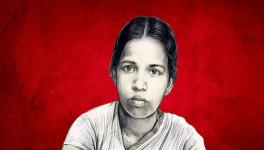Behind India’s Lowest Female Labour Force Participation Rates in the World

Women in India spend about 5.8 hours or 352 minutes a day on domestic work. This indicates a severe ‘time poverty’ for women who in the process of balancing might be required to give up on rest and leisure, with severe consequences for their physical and emotional well-being.
————
March 8 is the International Women’s day [IWD]. The history of IWD is linked to women protesting for their rights as workers and thereafter receiving official recognition through this day from the United Nations [UN] in 1975. Each year, women’s movements in India mobilize on critical concerns impinging on women in the country. The UN has declared the theme for 2022 as “Gender equality today for a sustainable tomorrow” with a specific focus on climate change issues and women’s leadership, and contributions to mitigate climate change problems and build resilient societies.
Problematic portrayal of stereotypes in viral ad campaign
Oblivious to women’s rights issues and climate change concerns, most people and companies selling cosmetics, gadgets, holidays, beauty treatments flood print, digital and social media, thanking women for the sacrifices they make or for breaking male bastions. At both ends of the spectrum of this acknowledgement, there is a reinforcement of what industry, society and families want of women. The rules of the game are not what women set for themselves. Among many such commercial messages, advertisements and online videos, we have come across an early video entry by Prega news (a home pregnancy testing kit company). Prega news’ viral ad campaign, which has already garnered over 56.33 lakh views on YouTube, celebrates Women’s Day with a short 3.27-minute video with the hashtag #SheCanCarryBoth. The video grapples with motherhood and employment choices, which is a vexed question given the declining women’s labour force participation in India.
Also read: Women Rise in Anger at Farm Law Protests Breaking Patriarchy and Stereotypes
The video opens with a young woman walking on a railway platform anxious about her pregnancy as she fears that it will terminate her modelling career. She enters a railway ladies’ waiting room which has a sari-clad woman trying to comfort a wailing infant, a woman in formal pants working on a laptop and a housekeeping woman mopping the floor. A feeding bottle rolls down on the floor from the hands of the woman struggling to comfort the baby. The young model chooses to ignore and walks past the feeding bottle on the floor, symbolic of her mental state. The housekeeping woman picks up the bottle, hands it to the mother, and shares some wisdom on calming the cranky baby. As part of the conversation, she mentions she has three children.
The woman wearing trousers and working on a laptop (a representation of career conscious women) chides the housekeeping woman (representing a working-class woman) for having three children. She turns her attention to the woman in sari (representing a housewife) asking if she has foregone her desire to pursue her freedom, dreams and her individuality by having a baby. When the woman with the baby replies that motherhood adds to her identity, the career conscious woman dismisses it as a filmy dialogue from a housewife who never had to balance work (career) and life (family and motherhood).
The door opens, and a policewoman constable announces, “Madam, your vehicle has arrived‘. Upon the model enquiring about who she is, to everyone’s surprise, the sari-clad woman with a calm baby in her arms reveals she is a Senior Superintendent of Police, managing law and order of a district – Jhansi along with her responsibility as a mother. The aspirant model gets her message. The ad closes with the woman police officer in uniform receiving a complimentary copy of a magazine with the model, visibly pregnant, on the cover. The ad ends with the tagline “Because she can carry both”. ‘Carrying both’ envelopes her and the baby and also motherhood and all the ensuing responsibilities and a challenging career.
The four women in the waiting room characterised stereotypically in terms of their class, education, occupation status, attire and aspirations are tied to the motherhood and career dilemma. Does a woman’s role as a mother conflict with her desire to have an individual identity and pursue a career? Do women who seek both compromise on their freedom and choice? Should women remain single or not have babies to remain in employment and be successful?
Of course, the women in this video never ask why women’s choices, whether to pursue solely a career, or career and motherhood, or motherhood alone, are placed on a hierarchical scale. Do women across all classes have these as freewheeling choices, or are they conditioned in their thinking about their appropriate role and their socially acceptable choices?
The video is problematic on several counts. The entire conversation is among women grappling with the question of motherhood and career, placed antithetical to each other for argument and resolved as a matter of nazariya (perspective), that women have to imbibe to be able to carry out both and without any complaints. This often is also the popular perception which undermines women’s complaints of the triple burden of income earning work, domestic work and child care. The video seems to celebrate that most women can (or have to) single-handedly manage care work and employment. It talks about nazariya, making it an individual issue and not a social one. Women are thus seen as atomised entities who must learn to embrace motherhood while managing demanding professions.
In other words, women’s attempts to achieve ‘equality’ has to be at the cost of undermining the question of ‘difference’, and not have it recognised through public policies. It reminds one of Wollstonecraft’s dilemma that expects women to “become men” to achieve equality, or have their ‘differences’ recognised and remain lesser citizens.
Also read: The working women’s manifesto demands government accountability
Reality of women’s labour in India
A little unboxing of this ‘managing both’ in the context of India with macro data might be useful to understand what it implies for women. According to data from the Organisation for Economic Co-operation and Development (OECD), women in India spend about 5.8 hours or 352 minutes a day on domestic work. This is about 577 per cent more than men, who spend about 52 minutes in a day on the same. Compared to BRICS countries for which data is available, this is 40 per cent more than what women in South Africa and China spend. This indicates a severe ‘time poverty’ for women who in the process of balancing might be required to give up on rest and leisure, with severe consequences for their physical and emotional well-being.
It is therefore perhaps not a random occurrence that India has one of the lowest female labour force participation rates globally. The emphasis on women’s role as mothers, caregivers and solely responsible for domestic work haunts employment decisions. The World Bank data for 2020 illustrates that only 19 per cent of women in India are in the labour force, a fall from 26 per cent in 2005. In comparison to India, the female labour participation rate is 30.5 per cent in Bangladesh and 33.7 per cent in Sri Lanka.
Women’s work has always been a domain of societal scrutiny, especially when it is seen as a matter of choice. The Director of this video harks back on a clichéd narrative where women are pitted against each other, and the sanskari woman who mouths patriarchal values of women’s commitment to responsibilities rather than rights and choices, triumphs.
Also read: Address the needs of female seasonal migrant labourers
In the midst of this, it is pertinent to ask how we as a society remove dilemmas around marriage, motherhood, and employment. How do we bring men into the picture shouldering domestic and caregiving work? Feminists like the British political theorist Carole Pateman suggest the resolution of this dilemma by eliminating all forms of discrimination against women and the defeminisation of care work. We need to work towards supportive public policies, starting from maternity benefits, paternity leave, public-funded crèche facilities and so on. The existing policies in India are not universal across all sectors of the economy and are dogged by exclusions. A commitment to gender equality, after all, is the nazariya that is most needed now and ever.
(The views expressed are personal.)
Get the latest reports & analysis with people's perspective on Protests, movements & deep analytical videos, discussions of the current affairs in your Telegram app. Subscribe to NewsClick's Telegram channel & get Real-Time updates on stories, as they get published on our website.
























